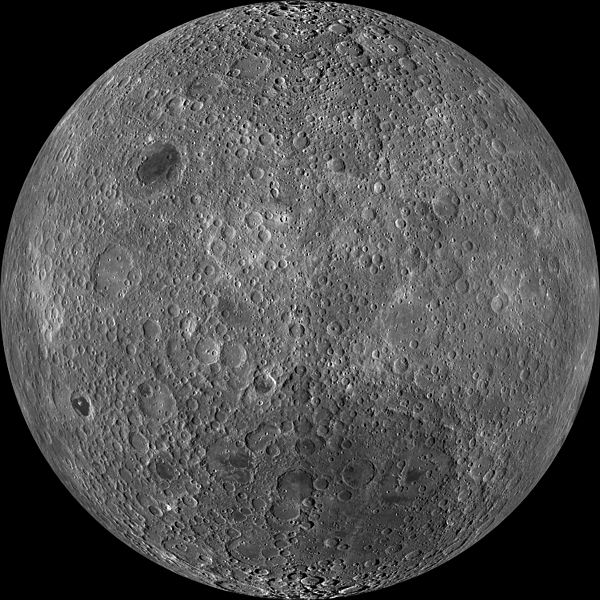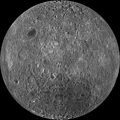Dataja:Moon Farside LRO.jpg

Wulkosć tutoho přehlada: 600 × 600 pikselow. Druhe rozeznaća: 240 × 240 pikselow | 480 × 480 pikselow | 768 × 768 pikselow | 1.024 × 1.024 pikselow | 2.048 × 2.048 pikselow | 18.000 × 18.000 pikselow.
Wersija z wyšim rozeznaćom (18.000 × 18.000 pikselow, wulkosć dataje: 85,34 MB, typ MIME: image/jpeg)
Wersije dataje
Klikń na wěsty čas, zo by wersiju dataje w tutym času zwobraznił.
| Čas | Wobrazowy napohlad | Rozeznaće | Wužiwar | Komentar | |
|---|---|---|---|---|---|
| aktualnje | 20. měrca 2014, 01:47 |  | 18.000x18.000 (85,34 MB) | Huntster | High resolution mosaic. |
| 9. apryla 2011, 06:12 |  | 1.600x1.600 (1,44 MB) | Bubba73 | {{Information |Description ={{en|1=Far side of the Moon, by NASA's Lunar Recon. Orbiter}} |Source =http://apod.nasa.gov/apod/image/1104/farside_lro1600.jpg |Author =NASA - LRO |Date =2011? |Permission = |other_versions = } |
Datajowe wužiwanje
Njejsu strony, kotrež tutu dataju wužiwaja.
Globalne wužiwanje dataje
Slědowace druhe wikije wužiwaja tutón wobraz:
- Wužiwanje na af.wikipedia.org
- Wužiwanje na az.wikipedia.org
- Wužiwanje na be.wikipedia.org
- Wužiwanje na bjn.wikipedia.org
- Wužiwanje na bn.wikipedia.org
- Wužiwanje na bs.wikipedia.org
- Wužiwanje na ca.wikipedia.org
- Wužiwanje na cs.wikipedia.org
- Wužiwanje na de.wikipedia.org
- Wužiwanje na en.wikipedia.org
- Wužiwanje na en.wikibooks.org
- Wužiwanje na en.wikiversity.org
- Solar System, technical/Moon
- User:Marshallsumter/Radiation astronomy2/Visuals
- Draft:Original research/Planets
- User:Marshallsumter/Radiation astronomy2/Visuals/Quiz
- User:Marshallsumter/Rocks/Rocky objects/Astronomy
- User:Marshallsumter/Radiation astronomy/Courses/Principles/Hourly 2
- User:Marshallsumter/Radiation astronomy/Courses/Principles/Midterm quiz
- User:Marshallsumter/Radiation astronomy/Courses/Principles/Final quiz
- Titan/Quiz
- User:Marshallsumter/Rocks/Rocky objects
- Draft:Enceladus/Quiz
- Moon/Quiz
- Stars/Sun/Heliology/Quiz
- Earth/Quiz
- Stars/Reds/Quiz
- Draft:Dione/Quiz
- User:Marshallsumter/Radiation astronomy2/Scattered disks/Quiz
- User:Marshallsumter/Radiation astronomy1/Kuiper belts/Quiz
- Liquids/Liquid objects/Moon
- User:Marshallsumter/Radiation astronomy/Craters
- Wužiwanje na es.wikipedia.org
- Wužiwanje na et.wikipedia.org
Globalne wužiwanje tuteje dataje pokazać


